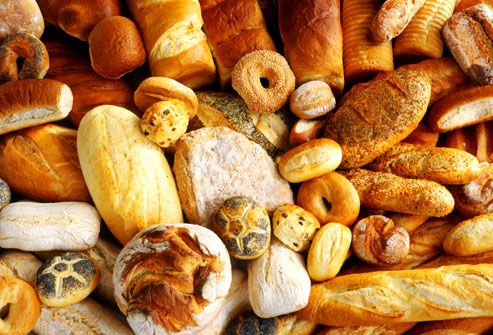Inflammation is a common cause of pain, however it is easily preventable with small changes to your daily life. Inflammation is when the body attacks foreign substances in an attempt to heal itself, releasing white blood cells and histamines[1]. While headache or joint pain may seem like isolated incidents specific to the area in pain, these maladies are often caused or worsened by the food you put into your body. Much of the inflammation in the body begins in the gut, which has a very thin and at times permeable wall through which nutrients and other materials pass into the bloodstream. This is referred to as leaky gut syndrome, however the symptoms are often so far removed from what we realize to be gut-related that they never consider a diet change to be an effective option. Inflammation within the body can lead to serious health issues and chronic inflammatory diseases, including obesity, diabetes, heart disease, and autoimmune conditions[2]. Luckily, eliminating or limiting the intake of several common food groups from your diet can significantly subdue inflammation within the body, eliminate the symptoms of these chronic diseases, addressing the root of the issue.

1. WHEAT
Wheat and other cereal grains have been found to cause inflammation. The body has difficulty digesting the components of wheat, particularly gluten, which often leads to an increased intestine permeability. Lectins are another component of wheat that are potentially damaging to organs and are extremely difficult for the body to process, as they are resistant to digestive enzymes. When lectin and gluten make their way into the bloodstream, they invoke an inflammatory response in other parts of the body, as the immune system works to eliminate them. This leads to varying forms of pain, which may range from headaches to joint pain. A major source of pain that comes from wheat consumption is gut pain. This may lead to celiac disease, which causes damage to the small intestine in response to gluten consumption. This is similar to Crohn’s disease, which is an inflammatory bowl disease that causes abdominal pain and fever, which are inflammatory responses, among other symptoms[3]. The long-term effects of consumption in some cases may lead to chronic inflammatory diseases such as diabetes and obesity[4].

2. DAIRY
While dairy has been hailed as a vital component of a healthy diet, it causes a number of negative side effects, as most humans do not posses the enzyme necessary to break down milk sugar (lactose) or milk proteins (whey and casein). Difficulty breaking down these components leads to inflammation, which often takes the form of digestive discomfort and potentially acne. Consuming dairy makes the digestive system highly acidic, which forces the body to take elements from bone—such as calcium—and use it to alkalinize the digestive system. Contrary to marketing claims, it often takes more calcium to digest dairy than it provides for other purposes, consequently weakening bones and causing joint pain[5]. There are a number of non-dairy products available, often made from coconut or almond products, which can be used to replace milk, yogurt and ice cream.

3. SUGAR
When digesting sugar, the body releases insulin in order to regulate blood sugar levels. While insulin is important to maintain hormonal balance and stability in the body, when too much is released, it causes inflammation. Sugar consumption can lead to a number of chronic illnesses, most notably diabetes, which occurs when the body loses control of its insulin-making abilities. Heart disease and obesity are also consequences of excessive sugar consumption and occur because of deep tissue inflammation. Cane sugar and high fructose corn syrup cause the most drastic spike in insulin production leading to more severe inflammation than less processed and unrefined sugars and sweeteners[6]. Refined sugars and high fructose corn syrup are most commonly found in processed foods, and should be swapped out for natural sweeteners—such as honey, agave, or raw sugar—which have a much less drastic effect on the body.

4. CAFFEINE
Caffeine is known to cause inflammation in the body when taken in high doses. Caffeine is most commonly found in coffee, which is one of the most widely consumed beverages in the world, making caffeine the most commonly consumed stimulant drug in the world. Not only does it constrict blood vessels and cause stress, but it also triggers insulin production, which is highly inflammatory in the body. Caffeine is highly addictive, as it heavily impacts brain function and blood flow to the brain, which is why coffee drinkers get headaches during withdrawal[7]. Caffeine has also been found to interfere with sleep quality, even for those who only drink one cup of coffee in the morning. While you may feel like you’ve been asleep for 8 hours, you spend less time in slow-wave sleep after consuming caffeine, which is the type of sleep when the body heals[8]. While quitting coffee and other forms of caffeine may seem like a physical impossibility, cutting back and ultimately letting go of caffeine for good will have positive effect on the body and brain functions and reduce the risk of chronic diseases associated with inflammation. Tea is a great substitution for coffee, as it is mildly caffeinated and comes in a variety of flavors. Try swapping coffee for chai, green or herbal tea to reduce your body’s reliance on caffeine!
While these foods may seem impossible to let go of, it is important to realize the long-term benefits of a healthy diet and begin to substitute these foods with healthier options. Try removing any or all of these food groups from your diet for a week and observe how you feel. After a week, adding them back in will help you to realize the true effect these foods have on your overall health, and will help make the process much easier.
—
This article was contributed by Mary Ney.
Mary is a first year student at American University in Washington, DC where she is studying public health. She is originally from Ocean City, New Jersey. Mary has been practicing yoga for over four years and has a passion for wellness, running, and healthy foods.
To read more about our students and to find out about the research they are doing, visit the Mind-Body Medicine homepage.
—
References
[1] Nordqvist, C. (16 Seotember 2015). Inflammation: Causes, symptoms, and treatment. Medical News Today. Retrived from http://www.medicalnewstoday.com/articles/248423.php#what_is_inflammation
[2] Marquis, Dr. D.M. (March 7, 2013). How inflammation affects every aspect of your health. Mercole: Take control of your health. Retreived from http://articles.mercola.com/sites/articles/archive/2013/03/07/inflammation-triggers-disease-symptoms.aspx
[3] Celiac disease and crohn’s disease. Celiac disease foundation. Date Accessed: 27 January 2016. Retrived from https://celiac.org/celiac-disease/celiac-disease-and-crohns-disease/
[4] De Punder, K. & Pruimboom, L. (12 March 2013). The dietary intake of wheat and other cereal grains and their role in inflammation. Retrived from http://www.ncbi.nlm.nih.gov/pmc/articles/PMC3705319/
[5] Myers, Dr. A. (April 10, 2013). The dangers of dairy. MindBodyGreen. Retrived from
http://www.mindbodygreen.com/0-8646/the-dangers-of-dairy.html.
[6] Gurthrie, C. (August 2006). Sugar breakdown. Experience life: The no-gimmicks, no- hype health & fitness magazine. Retrived from https://experiencelife.com/article/sugar-breakdown/ .
[7] What is it about coffee? (January 1, 2012). Harvard health publications: Harvard medical school. Retrieved from http://www.health.harvard.edu/staying-healthy/what-is-it-about-coffee.
[8] Norris, PH. D. D. (n.d.). Mind-body for fibromyalgia and chronic pain. The Mindfulness Center. Date Accessed: 27 January 2016.
Photo Credits
http://www.vocalbrilliance.com/wp-content/uploads/2014/01/variety-of-dairy.jpeg
http://cdn.rosannadavisonnutrition.com/wp-content/uploads/2015/03/natural-sugar-substitutes.jpg
http://img.webmd.com/dtmcms/live/webmd/consumer_assets/site_images/articles/health_tools/food_allergy_triggers_slideshow/photolibrary_rm_photo_of_breads.jpg
http://cbsnews1.cbsistatic.com/hub/i/2015/04/01/2667ab91-4e49-482c-9301-d5e45ea224b9/istock000045773978large.jpg
http://cdn2.curejoy.com/content/wp-content/uploads/2015/11/5-Effective-Ways-To-Relieve-Joint-Pain-And-Inflammation_FT.jpg



